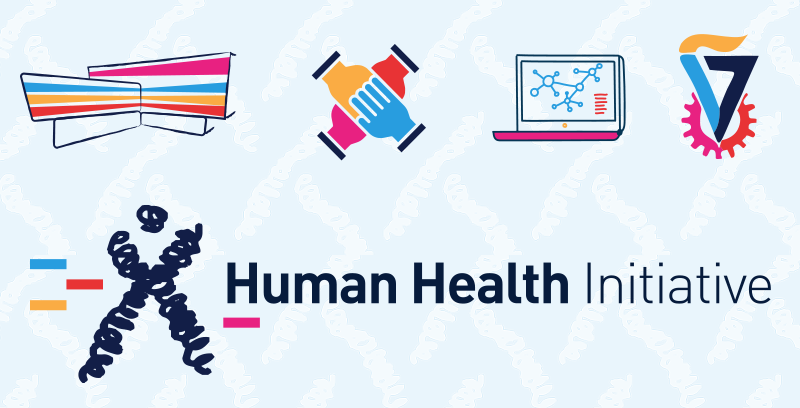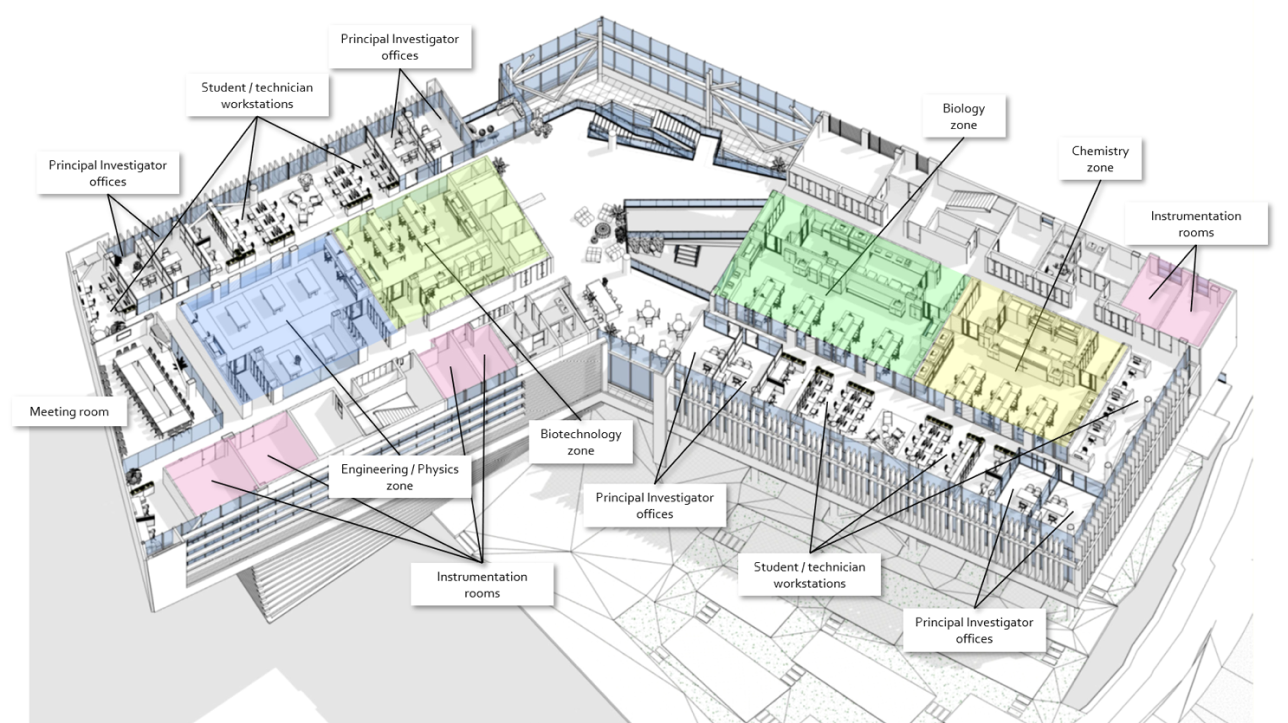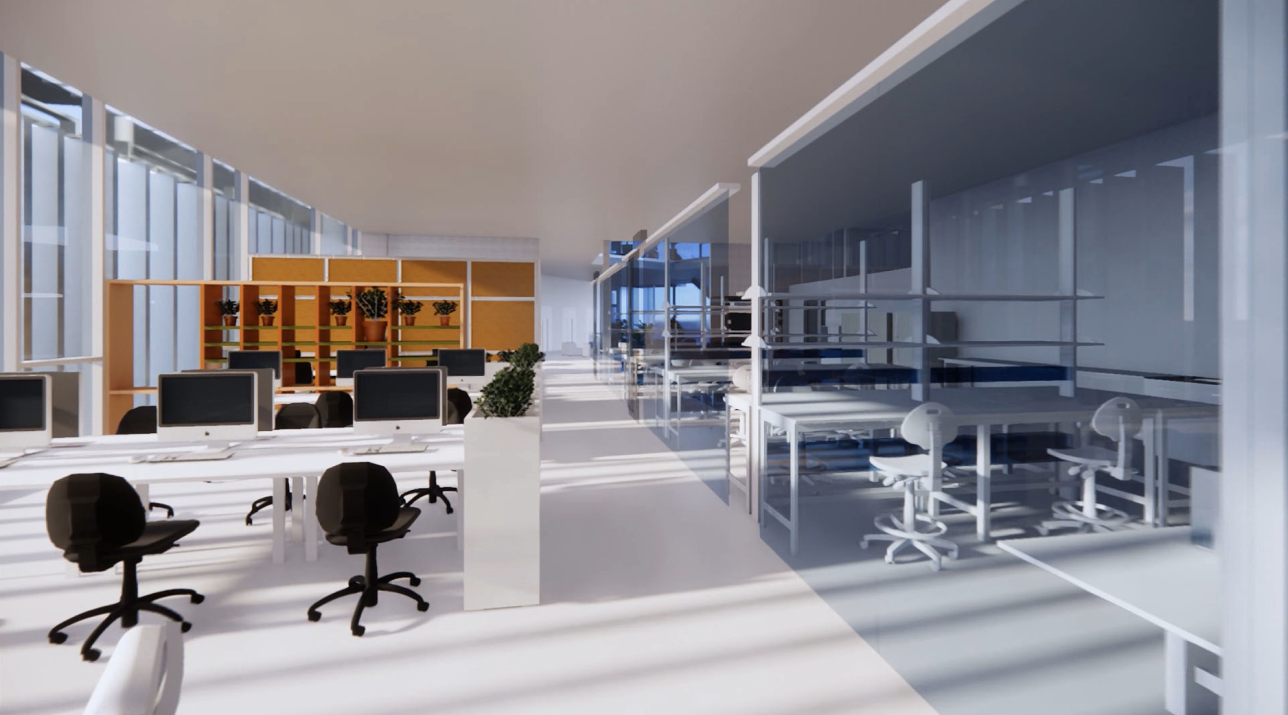
Labs
Each team will receive, share and collectively manage a common space, composed of ‘zones’ grouped by experimental requirements (chemistry, biology, biotechnology, physics/engineering, theory/computation).

The biology and biotechnology zones will include work benches, cell culture and instrumentation rooms for biological work; the chemistry zone will be set up with numerous fume hoods and dedicated spaces for synthetic and analytical chemistry. The physics/engineering zone will contain spaces for optical tables, sensitive instruments and advanced setups.
Each investigator will be allocated spaces in the different zones according to his or her needs based on collective team decisions. For example, an investigator might have one optical table in the physics/engineering, one fume hood in the Chemistry zone and two biological benches in the biology or biotechnology.
Each floor will contain eight principal investigator offices, eight lab manager or engineer workspaces, workstation spaces for 48 postdocs/students (beyond workbench places), six rooms for dedicated instrumentation, a meeting room, and a lobby with allotted spaces for discussions, coffee and light meals.

This floor layout is viewed as hugely instrumental in promoting truly collaborative, multidisciplinary research. First, it does away with the unavoidable physical boundaries associated with traditional, investigator- ‘owned’ spaces. To the contrary: students, research staff and investigators will intermix continuously, irrespective of their native discipline and academic unit. Second, as space is organized as disciplinary zones, infrastructure, instrumentation, expertise and management can be pooled, centralized and continually shared. Third, changes in personnel (for example, recruiting new investigators) and changing research needs (for example new approaches replacing obsolete ones) are rapidly accommodated by space reallocations instead of the expensive, time consuming and disruptive practice of tearing down and rebuilding specialized labs inside ‘investigator-owned’ spaces. Finally, this arrangement fosters engagement in broad activities and promotes the creation of true team spirit.
